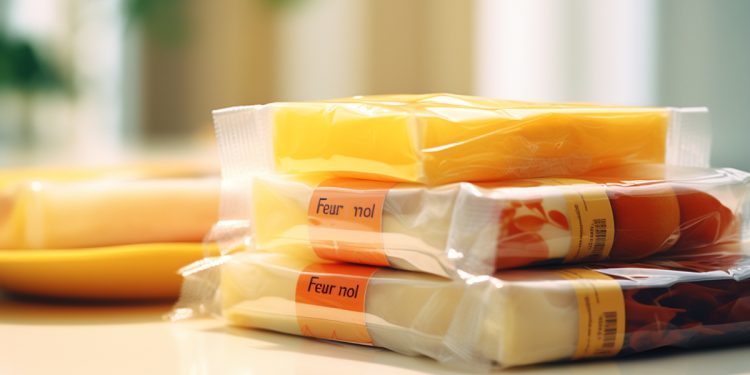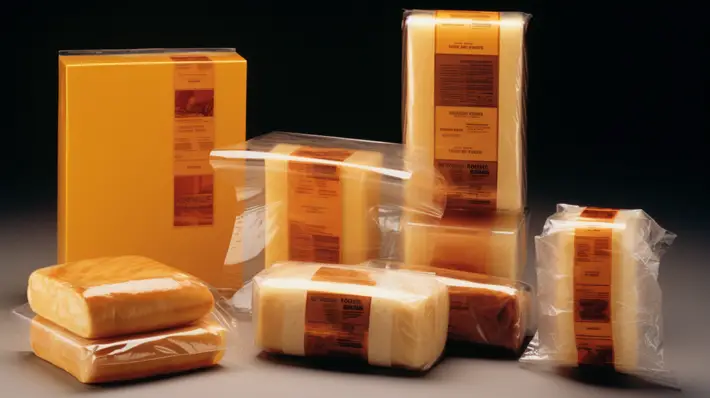Barrier Properties of Flexible Packaging: Preserving Product Freshness

Product wrapping copes with a wide range of tasks. Traditionally, it is used to preserve product freshness and prevent premature spoilage. Yet, nowadays, covers also perform a marketing function, serving as a distinctive tool for brand perception and recognition on store shelves. Packages serve to communicate with customers and play a significant role in consumer decision-making when choosing between products of competing brands.
Being the main barrier is one of the most vital tasks of packages. Wrappers are applied to protect food from all sorts of environmental influences, including pollution with debris, microorganism growth, moisture, sunlight, temperature surges, etc. Thus, a properly chosen cover should satisfy barrier properties set for stored products.
Essential Barrier Characteristics of Flexible Wrappers
Each wrapper should satisfy particular requirements set for flexible barrier packaging. These include:
● tear resistance. Covers should preserve food integrity and be highly resistant to punctures and sharp shocks. Multi-layer plastic wrappers help improve tear resistance.
● water vapor resistance. Moisture influences products, causing their swelling or, if it is evaporated, dryness. Depending on the type of stored product, wrappers should either protect food from losing moisture or, vice versa, prevent products from absorbing water from the environment.
● oxygen barrier. Oxygen affects all sorts of products, causing increased microbial growth. As a result of oxygen presence, food can get rancid and moldy, lose nutrients, and lose its initial colour.
More precise barrier characteristics are set for each group of products. For example, wrappers for frozen food should be resistant to temperature extremes. Fragile and crack-prone food should be packed in covers that withstand pressing and shocks, preventing damage and breaking.
TOP Materials For Manufacturing of Flexible Barrier Wrappers
The modern industry offers the next barrier materials for flexible packaging:
1. PET. Polyester is a thick highly-resistant transparent film. It is cost-effective and safe. The material does not interact with food components. Thus, the film is widely applied for packing both edible and non-edible products. PET is used in food packaging with transparent view windows.
2. Foil. Although the price for aluminum foil is higher, it features very high resistance to oxygen and moisture. By combining it with PET, PE, or MOPP materials, the effect of a “metal can” is created, which allows for achieving the maximum shelf life. This solution is widely used for packing chocolate- or oil-content food that is afraid of temperature rises and sunlight and tends to melt.
3. VMPET. It is a multi-layer film, in which a polyester layer is reinforced with a metalised (chromium or nickel) foil. A thin metalised layer allows for improving barrier qualities. Metalised layers are applied instead of aluminum foil to reduce packaging costs. The option is used for packing medical treatments and food.
4. MOPP. This class embraces different types of polypropylene (BOPP, CPP, etc.). Its main differences from polyester include the ability to create matte lamination, lower cost, and high resistance to temperature extremes. Due to a higher melting point, such films are used for products that require sterilisation and boiling.
5. Nylon. This material is used to enhance the tear-resistant characteristics of covers. Nylon is usually combined with foil or polyester. Nylon co-extrusion is widely applied for packing fish and seafood products, using vacuuming and skin covers. Nylon wraps food without breaking.
6. PE. The material has a weak barrier. Yet, its main benefit is high elasticity. Polyethylene is widely used as one of the layers of complex covers. Due to its elasticity, it improves package flexibility. The material does not come into a reaction with acids and bases.
If you search for a trusted flexo printing company, choose Uniflex. Uniflex is a reputable developer of customisable solutions and high-quality packaging for all sorts of products. Skilled employees help businesses develop competitive high-quality wrappers.
Factors to Consider When Selecting Packaging Materials
Now, let’s make a list of parameters to take into account when choosing the most durable type of packaging for your products:
1. The product type. First of all, consider what you produce and outline what barrier properties are essential for your product.
2. Shelf life. If you manufacture products with a low shelf life, then give preference to thin films with low or medium barrier properties. The reason for this is cost-effectiveness. Since your product is consumed quickly, it is reasonable to use economic wrappers. For products with a long shelf life, freshness and integrity preservation is the key criterion. Thus, producers should choose high-barrier wrappers that will preserve freshness, and reduce the amount of waste and spoiled food.
3. Moisture sensitivity. Is your food sensitive to moisture? If yes, choose high-density plastic films with laminations.
4. Oxygen sensitivity. Is oxygen able to spoil the taste and freshness of your food?
5. Physical capacity. Wrappers should be capable of carrying the content. Thus, test the strength of covers to make sure that they are durable enough to carry the weight.
Advantages of Barrier Characteristics of Flexible Covers
Flexible packaging has the following benefits:
1. Preserve product freshness. Proper wrappers protect the content from the negative influence of the atmosphere.
2. Reduce food waste. Compliance with barrier properties prevents premature food spoilage.
3. Attract customers. Vivid bags and boxes serve as a tool for communication to manage consumer behaviour.
Proper packaging must comply with barrier properties. Depending on the type of food, products require different wrappers. Still, any cover must keep food tasty, aromatic, and fresh.










